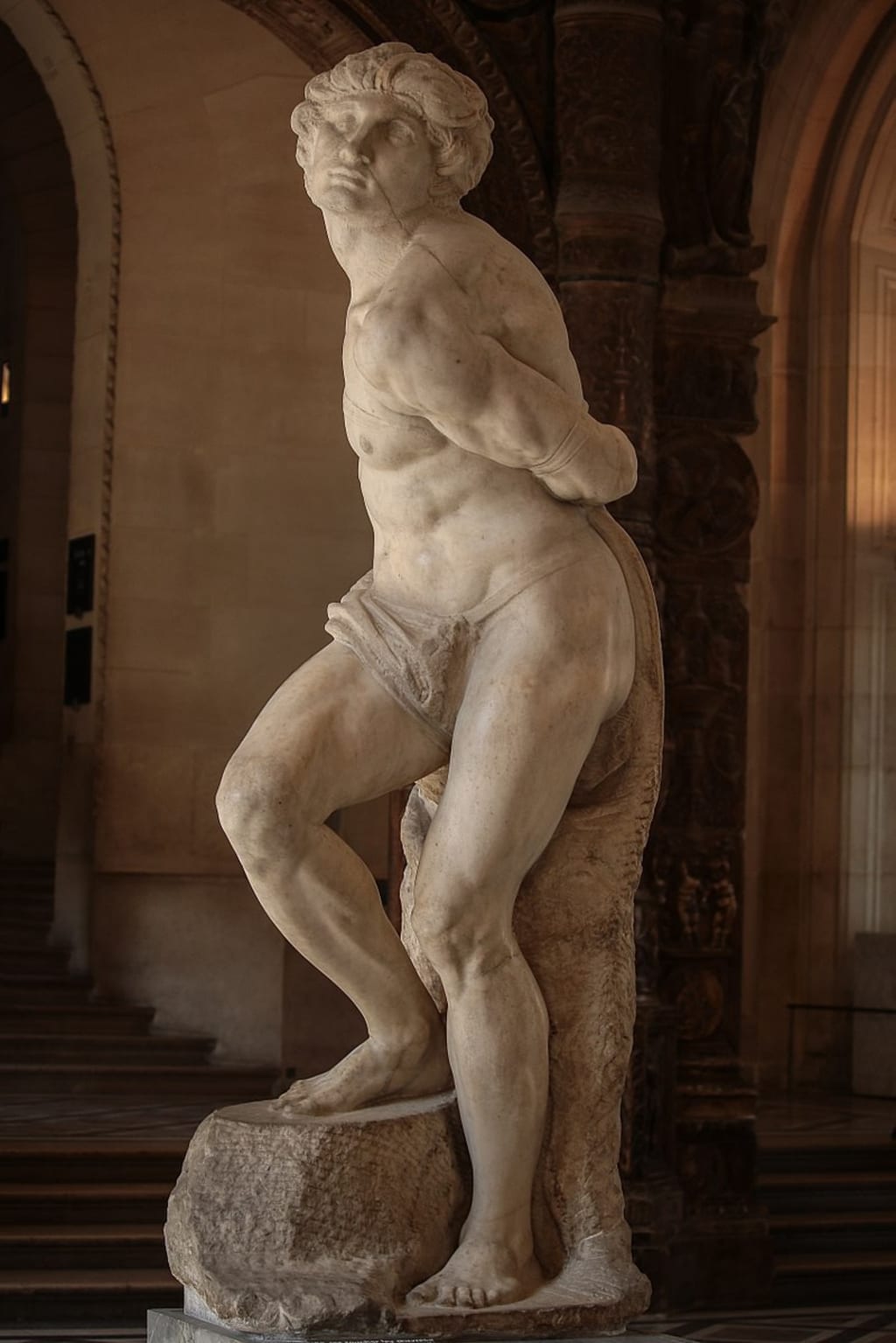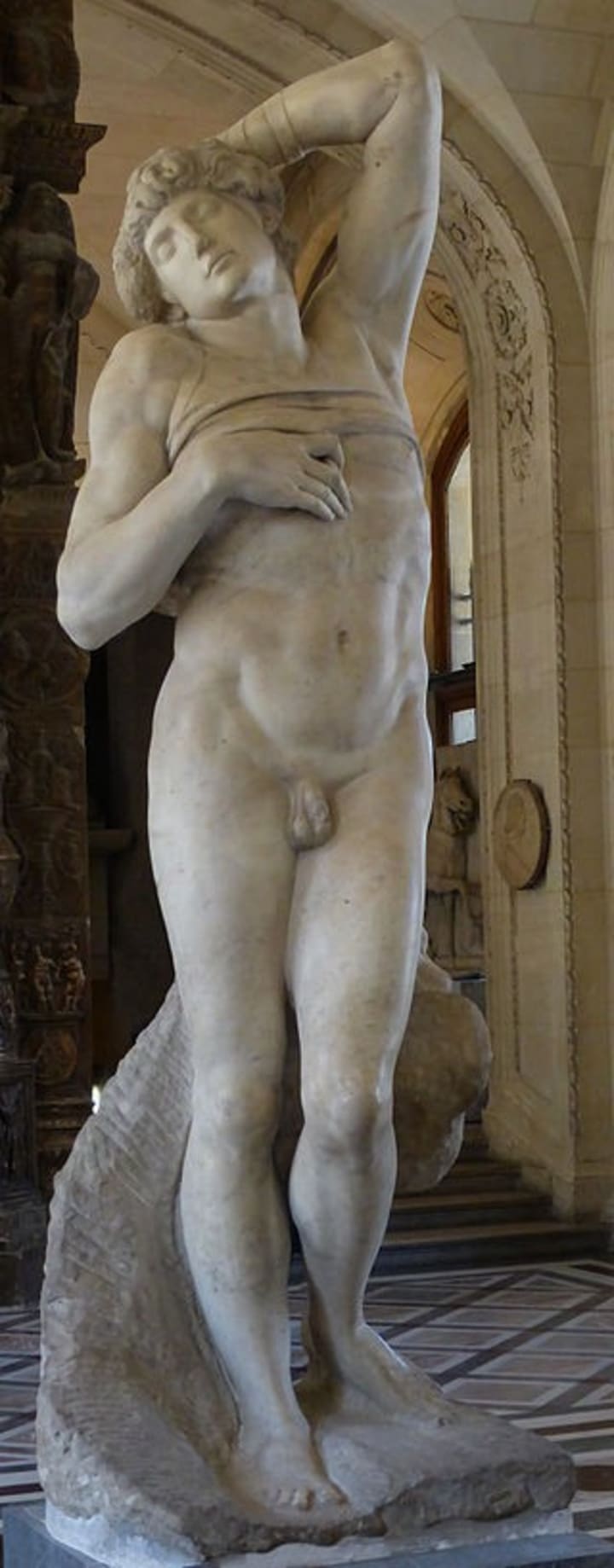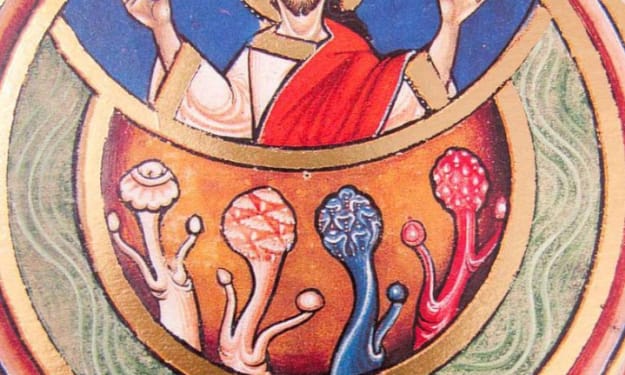How Michelangelo's Slaves Were Destined to Travel France
From Michelangelo's generosity to political rivalry

The Rebellious Slave and Dying Slave are architectural marvels created by the maverick artist Michelangelo. These sculptures were commissioned by Pope Julis II for his architectural ensemble Tomb of Pope Julius II. But after the death of Pope Julius, the colossal tomb could never be scaled to the level the Pope wished. And the Slaves were destined to go to the King of France referred to as Louvre Slaves.

This article mainly emphasizes - Michelangelo's exceptional gesture of gifting the marble sculptures to Roberto Strozzi - a member of the prominent Florentine family of bankers in 1566 and how these sculptures traveled to France.
Michelangelo's kinship with the Strozzi family
In 1544, the sixty-nine-year-old Michelangelo become extremely ill and people assumed that his death was imminent. His close companion, Luigi del Riccio, who was a business manager to the affluent family of Strozzi of Rome took him to their residence.
Del Riccio was a trusted companion to Michelangelo and managed his work contracts and negotiating agreements. Del Riccio's nephew, Cecchino Bracci, a young man who shared mutual interests with Michelangelo developed a great rapport with him and was admired in the Roman circle. In January 1544, Cecchino Bracci died suddenly and this incident cemented the bond of Del Riccio and Michelangelo.
Recuperating in Robert Strozzi's palace under the care of del Riccio, Michelangelo developed close ties with Robert Strozzi.
Robert Strozzi's legacy went back to his grandparents, Filippo Strozzi, the Elder (1428–91), and his wife, Selvaggia Gianfigliazzi (1460–1525) who started the banking business in Florence, moved into politics, and became a wealthy and prosperous family in Florence.
The rivalry between the Strozzi and Medici could not be ignored and the Strozzi's vehemently opposed the hegemony of the Medici. But soon afterward, the Strozzi married into the Medici family, essentially giving the Medici superiority.
Michelangelo's family made ties with both the families and his father enjoyed the patronage from Lorenzo the Magnificent (Medici) who helped him to get a position in the government.
Scholars have detailed how such dynamics of familial bonds, social connections, and patronage shaped Florentine society, creating a culture of obligation that operated through the exchange of gifts, the granting of favors, and other forms of reciprocal benefit.
Michelangelo acknowledged the attention given to him during his illness from the Strozzi family and felt the necessity of discharging his obligations through the power of gifts.
Michelangelo's gift of Slaves to Roberto Strozzi
Michelangelo was deeply indebted to the hospitality of Roberto Strozzi and his family. But strangely, the first gift offered by him was not to Strozzi, nor his friend del Riccio, who actually nursed him and nor to the physician Baccio Rontini, but rather to the King of France, Francis I.
In a letter to Strozzi and del Ricci, he wrote - ''Remind the king . . . that if he would restore the liberty of Florence, Michelangelo would make a bronze equestrian statue of him in the Piazza della Signoria at his own expense.''
This letter revealed Michelangelo's political undertone by offering a gift to Francis I.
In January 1546, Michelangelo again became bedridden and was under the care of del Riccio. Seeing his health condition and the political dynamics of the Medici family and the heirs of Pope Julis II, he gave the Slaves as a gift to Roberto Strozzi and did not publicize it.
Was Michelangelo already determined to give Slaves as a gift?
The Slaves were initially designed to be placed in Pope Julius II's tomb. But Michelangelo's argument of the Slaves no longer fit the design of the tomb was doubtful. The prototype of the tomb did not change substantially from 1532. When Michelangelo was bombarded with accusations that he had embezzled funds from the project and tried cheating Julius heirs, he might have pondered to give it as a gift.
The Slaves were released from the Julius tomb in August 1542. Roberto Strozzi kept it as a gift for a short time and transported Slaves on a ship to France in April 1550.
The Slaves served as the replacement to the first offer that Michelangelo made to Francis 1 of the equestrian sculpture and the request to make Florence liberated.
The gift that failed
Michelangelo's gift of Slaves had to fulfill dual-purpose - "a sign of debt" to the Strozzi for saving his life from illness and a deliberate act to convince the king of France to support their political agenda.
But his work proved to be futile when suddenly Luigi del Riccio died suddenly in 1546. Riccio was the strongest link between Micheangelglo and the Strocci family. And second, was the untimely death of King Francis in 1547 that ruined his political aspirations of him along with the Strozzi family.
The Slaves was finally sent to Francis's son, Henri II who lacked artistic instincts and in turn gifted it to Duke Anne de Montmorency, Constable of France (1493–1567), extending the cycle of the gift yet again.
The Slaves as a gift did not fulfill the personal aspirations of Michealangelo, the political agenda of the Strozzi family, and the liberty of Florence.
References
1. Michelangelo's Slaves and the Gift of Liberty
2. Learn the Remarkable History of Michelangelo's 'Dying Slave' and 'Rebellious Slave' Sculptures
If you like my articles, here is my Youtube channel.
About the Creator
Kamna Kirti
Art enthusiast. I engage with art at a deep level. I also share insights about entrepreneurship, founders & nascent technologies.
https://linktr.ee/kamnakirti
Enjoyed the story? Support the Creator.
Subscribe for free to receive all their stories in your feed. You could also pledge your support or give them a one-off tip, letting them know you appreciate their work.






Comments
There are no comments for this story
Be the first to respond and start the conversation.